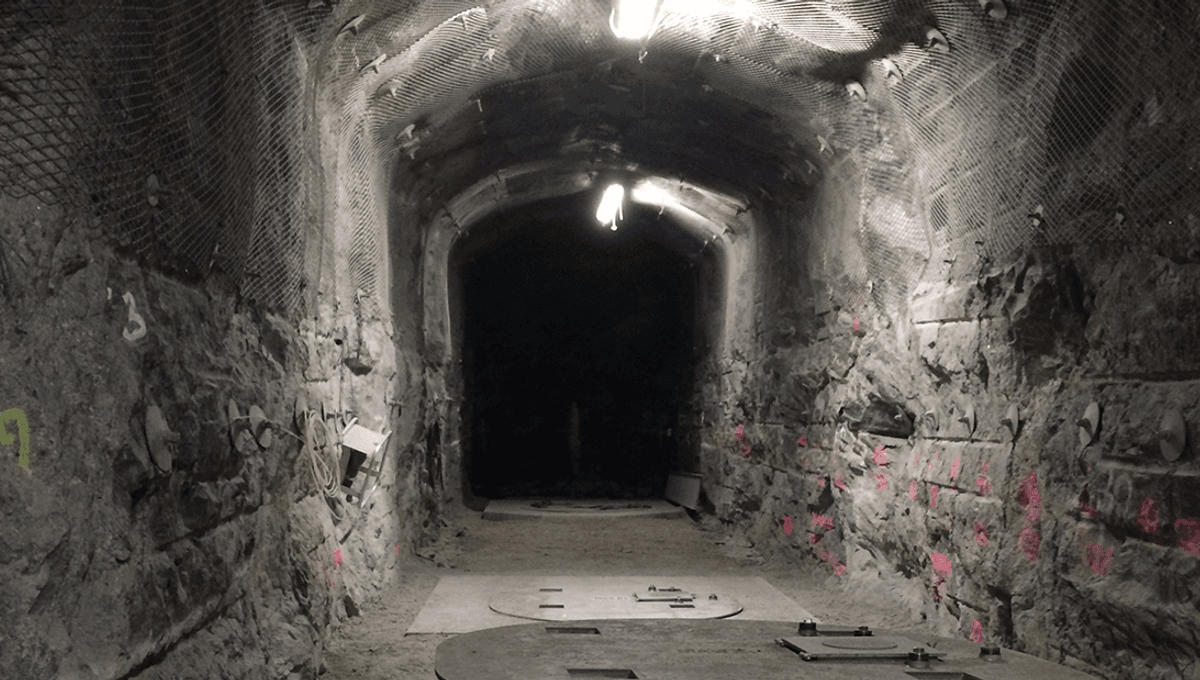
On Olkiluoto island in the west of Finland, a tomb will soon be opening. When it is sealed, the hope is that it will remain so for over 100,000 years.
Nuclear fuel, though far cleaner and less polluting than the fossil fuels that have powered our economies for the past 150 years, comes with a tricky problem attached in the form of nuclear waste. Overall, 90 percent of nuclear waste is classed as “low level”, including lightly contaminated clothing and tools, with 7 percent being intermediate level waste including used filters, and other components from within the reactors. But high level waste (HLW), making up just a small fraction of the overall waste, contains the majority of the radioactivity.
“Although the relative amount of HLW is small with respect to the total volume of radioactive waste produced in nuclear power programmes, it contains 99% of the radioactivity in this volume,” the Nuclear Energy Agency explains. “Furthermore, it takes about 10,000 years for the radioactivity of such wastes to decay to the level which would have been generated by the original ore from which the nuclear fuel was produced, should this ore never have been mined.”
In other words, nuclear waste lasts for a long, long time. Suggestions for its disposal have ranged from depositing it under the ocean floor to launching it into space. Splitting the difference, in 2016, Finland made plans to bury it underground at a facility named “Onkalo”, meaning “cave” or “hollow”. Here, nuclear waste will be stored at a depth of around 430 meters (1,411 feet) at the bedrock when it opens either next year or 2026.
The plan is that for the next century, nuclear waste will be transferred to the facility, where it will be housed in copper and cast-iron canisters and welded shut before storage. Under current plans, the facility will be sealed shut in the 2120s. Trial runs of disposal have already begun, with success, earlier this year in August.
The year 2120 might seem like a long way off, but compared to the amount of time the waste will be radioactive, it is peanuts.
Another long-term problem is that we don’t know how society will change over the millennia that the waste remains radioactive. How do we warn people, or the hyper-intelligent civilization of dogs that replace us, that the facility is dangerous, when we cannot guarantee they will speak our language?
Various ideas for this have been put forward, including making the landscape look as menacing and off-putting as possible, in the apparent hope that humans thousands of years from now still have the “NOPE” reaction.
“A masonry slab, either of black Basalt rock, or black-dyed concrete, is an image of an enormous black hole; an immense nothing; a void; land removed from use with nothing left behind; a useless place,” a 1993 report from Sandia National Laboratories suggests. “It both looks uninhabitable and unfarmable, and it is, for it is exceedingly hot part of the year. Its blackness absorbs the desert’s high sun-heat load and radiates it back. It is a massive effort to make a place that is fearful, ugly, and uncomfortable.”
Other ideas include breeding cats that change color when they stray near nuclear waste, and then instilling stories about these animals in human society, to be passed down through the generations, indicating that color-changing cats indicate danger.
While the facility is operational, of course, humans can be warned of the dangers by employees and signposts rather than waiting to see if Mittens glows green. When it becomes operational in the next few years, it will offer a long-ish term solution to an incredibly long-term problem.
Source Link: Olkiluoto: The Island Where A Nuclear Tomb Will Remain Sealed For 100,000 Years